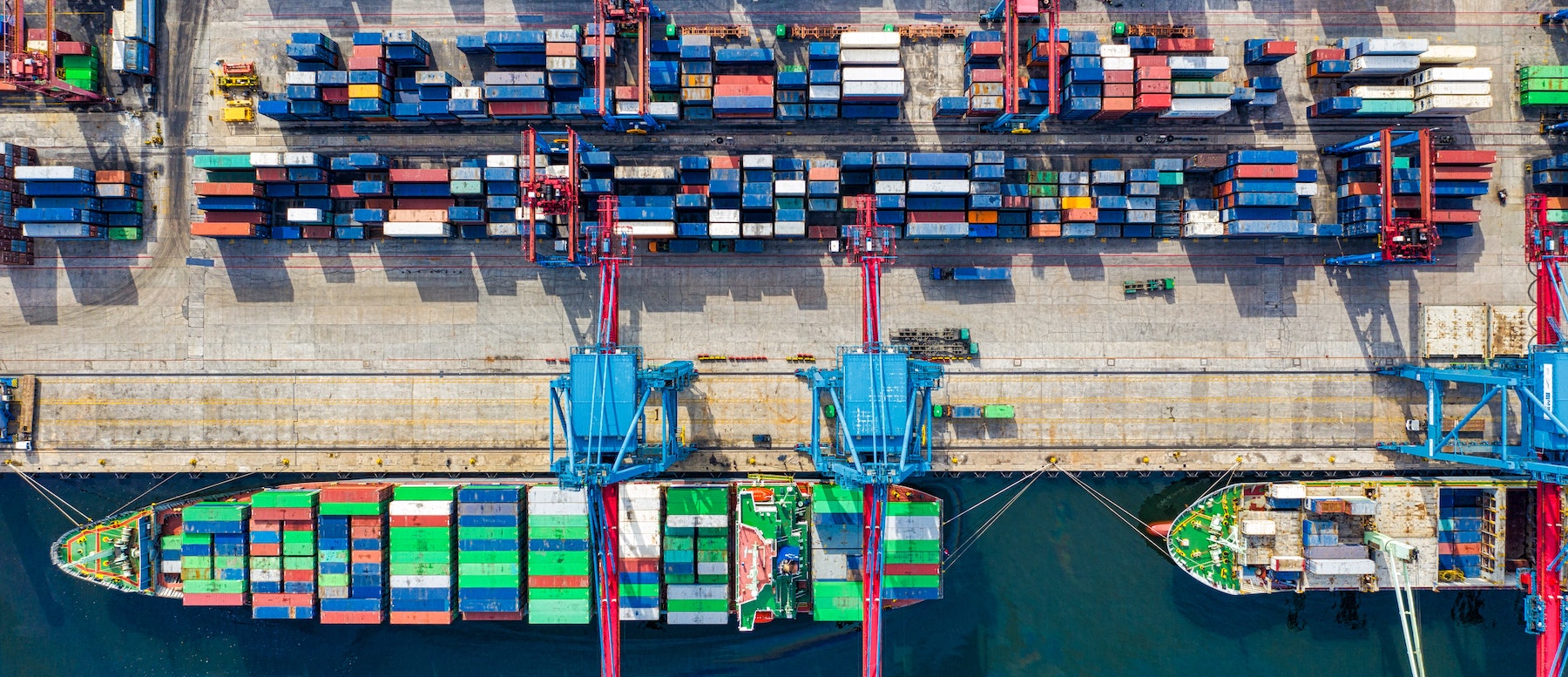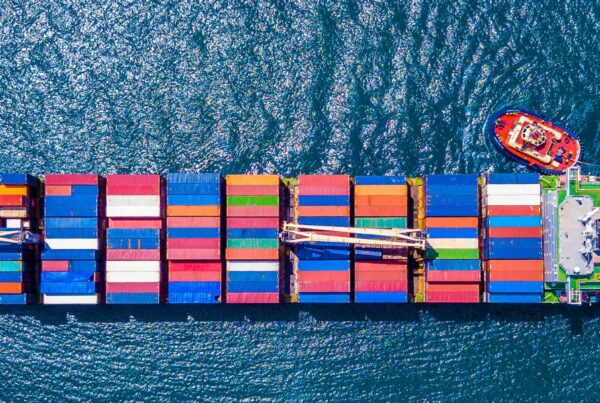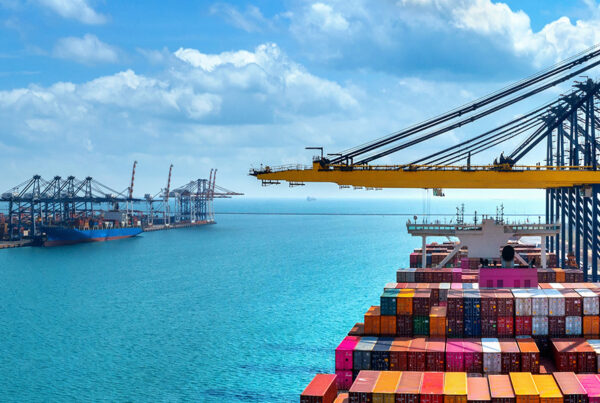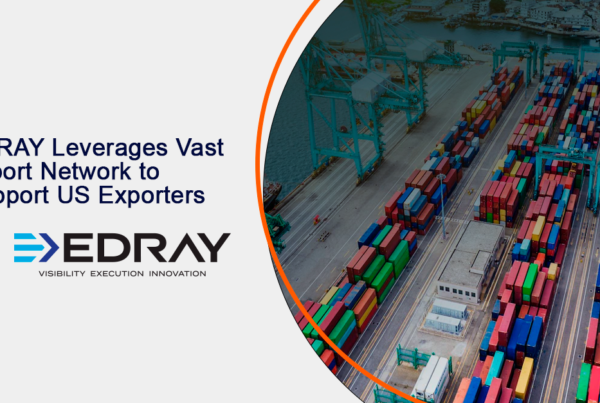Tech Advancements & Predictive Analytics lead the charge for innovation in 2023
EDRAY is leading the revolution in collaborative port logistics, and we believe 2023 will be another filled with constant change and opportunity for importers and exporters alike. Every day, our proprietary software provides us end-to-end access to data and statistics and gives us opportunity to predict some of the hottest trends of 2023. EDRAY is at the forefront of importers’ and exporters’ pain points on a day-to-day basis. We asked our leadership team to highlight some of their top predictions for the year to come that may continue to shape the industry.
Technological Innovations and Data Driven Analytics – Reade Kidd, CEO of EDRAY:
The use of technology, such as telematics and automation, is likely to continue to grow in the industry. This may include the use of sensors and data analytics to optimize operations and improve efficiency. Our customers are demanding more automation and more visibility in their specific port-to-DC operations, and as new companies like EDRAY provide technological solutions to this, the entire supply chain will become more efficient.
“Access to NODE data in each part of the supply chain gives shippers real time visibility into the efficiency of their shipping operations. Having this real time access allows experts to identify problems or bottlenecks and improve operation in real time, reducing time and costs. As tools get more sophisticated, AI will also speed up threat detection and resolution. Companies that stay ahead of this tech evolution will prosper best in 2023.”
Reade Kidd, CEO
Changes to the Regulatory environments at the Local and National level – Brett Parker, Chief Commercial Officer
Changes in local regulations will affect capacity and our client’s ability to move freight in and out of the marine terminals.
“The transportation and logistics industry is subject to a variety of regulations that can impact the process of importing goods into the US. Changes to these regulations, such as AB5 and the Clean Air Initiatives will eliminate a significant amount of drayage capacity on the west coast. We are estimating the loss of drivers and equipment will be no less than 25%. Although import volumes are down leading into 2023, they will rebound and when they do, it will no longer be a buyer’s market and dray costs will rise due to the eliminate availability of independent drivers and older equipment.”
Also, changes to rules governing the movement of goods through ports or changes to the operation of trucking or shipping companies, could affect the import of goods into the US.
“America’s largest ports are heavily reliant on international trade, and changes in global economic conditions can have a significant impact on its operations. For example, an economic downturn or an increase in protectionist trade policies could reduce demand for the port’s services. Changes in trade policies, such as tariffs and trade agreements, can have a significant impact on the port logistics and drayage industry. Companies may need to adapt to changes in these policies in order to remain competitive.”
Brett Parker, Chief Commercial Officer
Increasing demand for e-commerce results in the need for better, accurate inventory visibility – Paul Kennedy, VP for Destination Management
“The continued steady growth of e-commerce will continue apply pressure importers and retailers to accurately predict inbound inventory. As e-commerce sales increase and online retailers regularly sell goods not currently in inventory, importers need to know with certainty where their containers are in order to plan for and deliver consumer goods in record transit times.
Tech innovations that streamline processes and provide better visibility from destination to DC will become even more important. Predicting bottlenecks, minimizing demurrage and detention not only save dollars but critical time in getting goods from production to DC to last mile, and finally to the consumer.”
Paul Kennedy, VP of Destination Management
Competition from Smaller Ports increases pressure on the US’s largest port operations – Dan Burkart, Director of Marketplace
“Changes in the competitive landscape could impact some larger ports’ market share and operations. Like the backups we’ve seen in years past, smaller ports are becoming more sophisticated in their operation, allowing shippers to move more goods quicker with the assistance of technology, along with more favorable State laws and regulations. The Port of Los Angeles and Long Beach, for example, face serious competition from other U.S. gateways.”
Dan Burkart, Director of Marketplace
Other Macro-Economic factors affecting Collaborative port logistics in 2023 include:
- Sustainability and environmental awareness: As concerns about climate change and environmental sustainability continue to rise, there may be an increasing focus on reducing emissions and improving the environmental footprint of transportation operations in the port logistics and drayage industry.
- Labor shortages: The transportation industry has historically struggled with labor shortages, and this trend may continue in the coming years. Companies may need to find ways to attract and retain workers, such as through training programs and improved benefits.
- Infrastructure and regulatory changes: The Ports of Los Angeles and Long Beach are subject to a variety of regulatory and infrastructure challenges, such as the need to improve infrastructure to accommodate larger ships and to reduce emissions. Changes in these areas could affect the port’s operations.
_
Ready to see how you can improve your port logistics operations from origin to DC? Connect with EDRAY to discover how we bring expertise and innovation to your import or export operations. Contact Us today to learn more.



